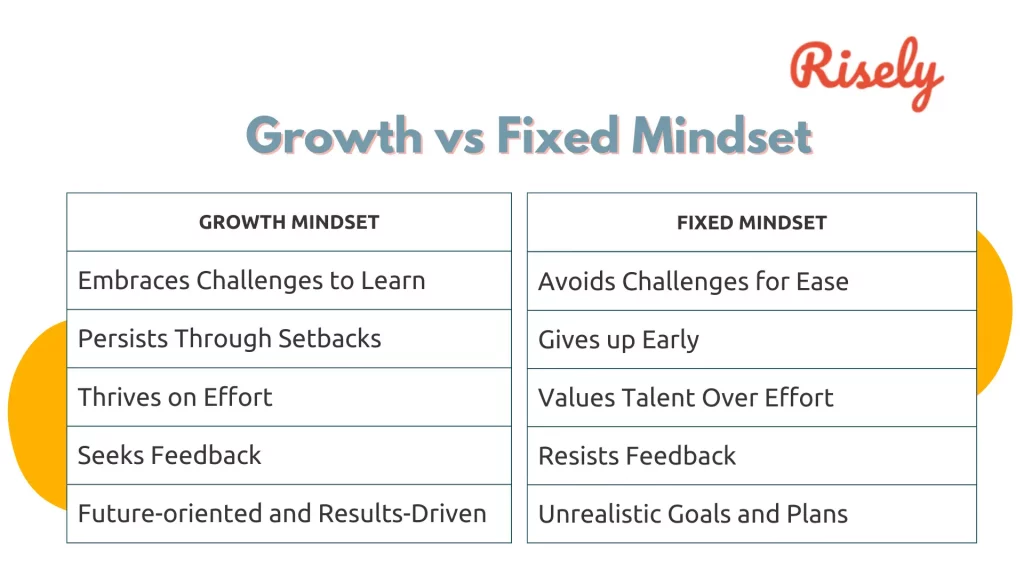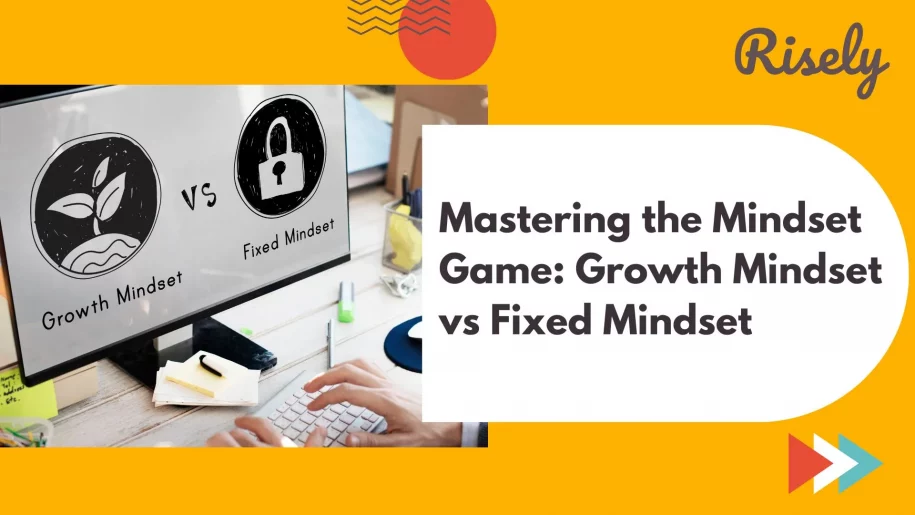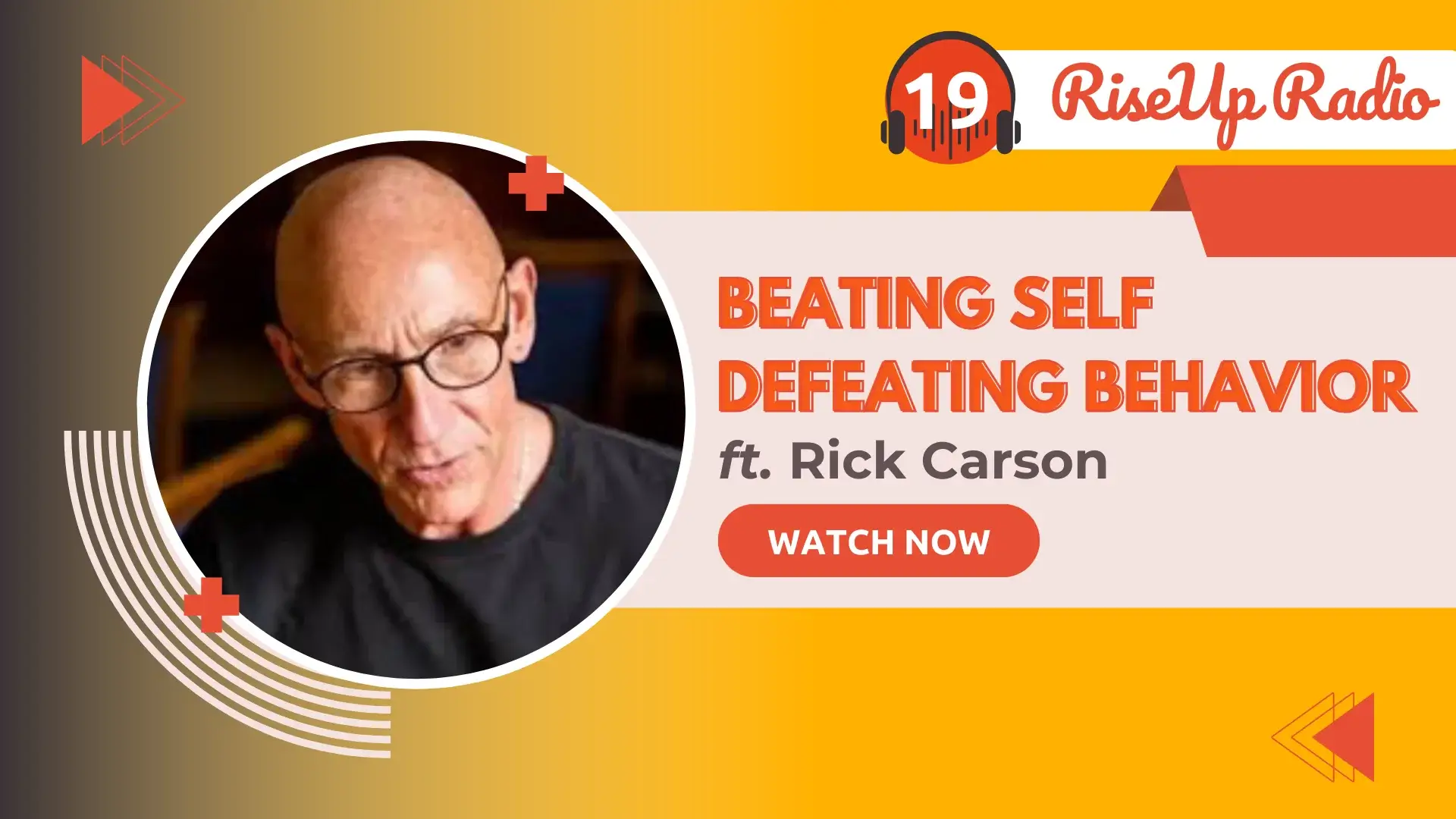Mastering the Mindset Game: Growth Mindset vs Fixed Mindset
Do you believe that your abilities and traits are predetermine and cannot be altered? Or can you develop and improve them with consistent effort and learning? In psychology, these two beliefs form the foundation of two prominent mindsets – fixed and growth mindsets. In this blog, we will explore the key characteristics of each, along with examples to help differentiate them. We will also discuss various methods that can help you develop a growth mindset that can positively impact your personal and professional life. Read on to learn about the distinct differences between these two mindsets and how to adopt a more productive and fulfilling approach to life and work.- Mastering the Mindset Game: Growth Mindset vs Fixed Mindset
- What is a growth mindset?
- What is a fixed mindset?
- Growth Mindset vs Fixed Mindset
- Growth Mindset vs Fixed Mindset Example
- What are the Characteristics of a Fixed Mindset
- How does a fixed mindset hurt managers?
- How can managers develop a growth mindset? Enabling Transformation
- Conclusion
- Frequently Asked Questions
- Other Related Blogs
What is a growth mindset?
A growth mindset believes that abilities, intelligence, and talents can be developed and improved through hard work, dedication, and persistence. People with a growth mindset see failures and setbacks as opportunities to learn and grow rather than as evidence of their fixed abilities or limitations. This mindset is characterized by a willingness to take on challenges, a belief in the power of effort and practice, and a focus on the process of learning rather than just the outcome. People with a growth mindset tend to be more resilient, motivated, and effective learners than those with a fixed mindset, believing their abilities are predetermined and unchangeable. The concept of a growth mindset was developed by psychologist Carol Dweck, who found that individuals who embrace a growth mindset are more likely to achieve their goals, overcome obstacles, and ultimately reach their full potential. By adopting a growth mindset, individuals can develop a more positive and proactive attitude toward learning and personal development, leading to tremendous success and fulfilment.What is a fixed mindset?
A fixed mindset is an individual’s belief or attitude toward their abilities, traits, and potential. People with fixed mindsets believe that their qualities and skills are fixed and cannot be improved. As a result, they tend to avoid challenges, give up quickly in the face of difficulties, and may feel threatened by the success of others. In a fixed mindset, people may believe that intelligence, creativity, talent, and other personal traits are fixed traits that cannot be changed. They may see failure as evidence of their inherent limitations and may be reluctant to take risks or try new things for fear of failure or looking foolish. This can lead to a lack of motivation and a tendency to stick to what is comfortable and familiar. A fixed mindset can limit an individual’s potential for growth and success, preventing them from learning new things, taking risks, and developing new skills. Therefore, it is essential to cultivate a growth mindset where individuals believe their abilities and potential can be acquired through effort, perseverance, and learning.Growth Mindset vs Fixed Mindset
A fixed mindset and growth mindset are two different ways of thinking about oneself and one’s abilities. A growth mindset believes one’s skills and qualities can be developed and improved through effort, learning, and practice. In contrast, a fixed mindset is a belief that one’s abilities and qualities are set in stone and cannot be changed or developed. Here are some critical differences between a fixed mindset and growth mindset:- View of failure: People with a growth mindset see failure as an opportunity to learn and grow, whereas those with a fixed mindset see failure as evidence of their limitations.
- Belief about abilities: People with a growth mindset believe their skills and qualities can be developed through hard work and dedication. In contrast, those with a fixed mindset believe their abilities are predetermined and unchangeable.
- Embracing challenges: People with a growth mindset are more likely to embrace challenges as opportunities to learn and grow. In contrast, those with a fixed mindset may avoid challenges for fear of failure.
- View of feedback: People with a growth mindset welcome feedback as a way to learn and improve, while those with a fixed mindset may see feedback as a criticism of their abilities.
- Resilience: People with a growth mindset are generally more resilient and persistent in facing setbacks and obstacles. Those with a fixed mindset may be more likely to give up or become discouraged.

Growth Mindset vs Fixed Mindset Example
Here are five examples of how someone with a growth mindset might approach a situation differently than someone with a fixed mindset:Learning a new skill:
- Growth mindset: “I may not know how to do this yet, but I can learn with practice and effort.”
- Fixed mindset: “I’m just not good at this. I’ll never be able to learn it.”
Receiving feedback:
- Growth mindset: “This feedback will help me improve and get better.”
- Fixed mindset: “This feedback is just criticism. I can’t do anything about it.”
Facing a challenge:
- Growth mindset: “This is a difficult challenge, but I can use my skills and knowledge to overcome it.”
- Fixed mindset: “This challenge is too hard. I’m not even going to try.”
Dealing with failure:
- Growth mindset: “I didn’t succeed this time, but I can learn from my mistakes and try again.”
- Fixed mindset: “I failed, so I must not be good enough. I’ll never be able to do this.”
Reacting to the success of others:
- Growth mindset: “I’m happy for their success and inspired to work harder to achieve my own goals.”
- Fixed mindset: “Their success makes me feel inferior and threatened. I’ll never be able to be as good as them.”
Other Interesting Reads
What are the Characteristics of a Fixed Mindset
A fixed mindset can limit an individual’s potential for growth and success by making them less likely to take risks, embrace challenges, and learn from failure. Recognizing and addressing the characteristics of a fixed mindset can help individuals develop a more growth-oriented perspective and reach their full potential. Here are some common characteristics of a fixed mindset:- Belief in innate ability: People with a fixed mindset tend to believe that their abilities and qualities are fixed and predetermined. They may believe intelligence, talent, and other traits are innate and cannot be changed.
- Fear of failure: People with a fixed mindset may avoid taking risks or trying new things for fear of failure. They may see failure as evidence of their limitations and fear of being judged or criticized.
- Avoidance of challenges: People with a fixed mindset may avoid challenges because they see them as threats to their self-esteem or identity. They may prefer to stick with what they know and feel comfortable with rather than take on new and unfamiliar challenges.
- Negative self-talk: People with a fixed mindset may engage in negative self-talk and believe they cannot achieve their goals. They may rebuke themselves and feel discouraged or hopeless when they face setbacks or obstacles.
- Limited view of success: People with a fixed mindset may have a limited idea of success and see it as a fixed and static achievement. They may focus on external validation and see success as something attained rather than a process of growth and development.
How does a fixed mindset hurt managers?
A fixed mindset can harm managers and their ability to lead effectively. There are several ways in which a fixed mindset can hurt managers:- Resistance to change: Managers with a fixed mindset often resist change personally and within their teams. They may be reluctant to adopt new technologies, processes, or strategies because they believe their current methods are the only right way. This resistance to change can hinder an organization’s ability to adapt and innovate.
- Fear of failure: Managers with a fixed mindset view failure as a reflection of their abilities rather than a natural part of the learning process. This fear of failure can lead to a reluctance to take risks or make bold decisions, which can impede progress and innovation.
- Ineffective feedback: Managers with a fixed mindset may be less inclined to provide constructive feedback to their team members. They might avoid addressing performance issues because they see them as inherent flaws rather than areas for improvement. This can hinder the professional development of their employees.
- Limited skill development: Fixed mindset managers may not invest in developing their skills and knowledge because they believe their abilities are fixed. This can result in a lack of personal growth and a failure to keep up with industry advancements.
- Micromanagement: Fixed mindset managers may micromanage, closely controlling every aspect of their team’s work. This behavior stems from a lack of trust in their employees’ abilities to handle tasks independently. Micromanagement can stifle creativity and autonomy and lead to employee frustration and disengagement.
- Limited leadership effectiveness: Fixed mindset managers may struggle to inspire and motivate their teams. They may lack the ability to communicate a compelling vision for the future or provide the necessary support for their team members to excel.
How can managers develop a growth mindset? Enabling Transformation
Developing a growth mindset as a manager is a transformative journey that involves cultivating a belief in your ability to learn, adapt, and improve continually. Here are steps to help you foster a growth mindset as a manager:- Acknowledge Your Current Mindset: Start by recognizing your current mindset. Are you more inclined toward a fixed mindset, where you believe your abilities are static, or are you open to growth and development? Self-awareness is the first step.
- Embrace Challenges: Embrace challenges as opportunities to learn and grow. Instead of avoiding strenuous tasks, take them on with enthusiasm. When faced with obstacles, see them as a chance to develop new skills and strategies.
- View Failure as Feedback: Shift your perspective on failure. Rather than seeing it as a reflection of your inadequacy, view it as feedback that helps you improve. Analyze what went wrong, learn from your mistakes, and adjust your approach accordingly.
- Cultivate a Love for Learning: Develop a genuine curiosity and love for learning. Stay open to new information, seek out knowledge, and be willing to explore subjects beyond your comfort zone. Lifelong learning is a cornerstone of a growth mindset.
- Set Stretch Goals: Challenge yourself by setting ambitious goals that push your boundaries. These goals should be achievable but require effort and dedication to attain. The process of striving for these objectives will fuel your growth.
- Seek Feedback and Input: Seek feedback from colleagues, mentors, and your team. Use their insights to identify areas for improvement. Constructive feedback is a valuable tool for personal growth.
- Inspire a Growth Culture: As a manager, you can influence your team’s mindset. Encourage your employees to embrace a growth mindset by providing opportunities for skill development, recognizing effort, and celebrating achievements. Lead by example. Demonstrate a growth mindset in your actions and decisions. When your team sees you embracing challenges, learning from mistakes, and continuously improving, they are more likely to follow suit.
- Practice Self-compassion: Be kind to yourself. Developing a growth mindset doesn’t mean being overly critical. Treat yourself with the same understanding and compassion that you extend to others when they face challenges. Be patient with yourself and stay committed to the journey. Remember that personal growth is a continuous process.
- Reflect and Journal: Regularly reflect on your experiences, challenges, and achievements. Consider keeping a journal to document your progress, insights, and areas where you want to improve. Writing can enhance self-awareness.
Conclusion
In conclusion, the growth mindset means viewing challenges and failures as opportunities to learn and grow. It is about being open-minded and willing to learn and try new things. On the other hand, the fixed mindset involves a rigid belief in one’s abilities and limits, often leading to avoidance of challenges, giving up quickly, and ultimately stagnation in personal development. Both fixed mindset and growth mindset can be beneficial in different situations, however adopting a growth mindset allows you to grow and achieve beyond what you may initially think is possible. If you are ready to develop a growth mindset and embrace life’s challenges, try out the tips and techniques given in the blog for cultivating a growth mindset.Dive deeper into the growth mindset with a free toolkit.
Grab your free copy of the growth mindset toolkit for managers today to leave a limiting mindset behind.
Frequently Asked Questions
What is the strongest mindset?
There isn’t necessarily one “strongest mindset,” as fixed and growth mindsets have unique strengths and weaknesses. The best mindset for an individual depends on their situation and goals. A growth mindset can be beneficial for handling challenges and setbacks, leading to personal growth and development. On the other hand, a fixed mindset can help maintain focus and consistency on specific goals, leading to mastery in a particular field. Ultimately, the strongest mindset allows us to approach challenges with confidence and adaptability while working towards our desired outcomes.
What are the three pillars of mindset?
The three pillars of mindset are:
Belief: Having a deep-seated belief in your potential and the potential for growth and development.
Focus: Maintaining a positive and constructive focus on your goals and what you want to achieve.
Action: Take intentional and consistent action toward your goals, despite setbacks and challenges.
Belief: Having a deep-seated belief in your potential and the potential for growth and development.
Focus: Maintaining a positive and constructive focus on your goals and what you want to achieve.
Action: Take intentional and consistent action toward your goals, despite setbacks and challenges.
How can I improve my mindset?
To improve your mindset, it is essential to focus on improvement over expertise and growth over perfection. This means setting learning goals, seeking mentorship, and reframing deficits as opportunities for growth. You should celebrate effort, perseverance, and mistakes as opportunities for growth and create a new compelling belief in yourself that views failure as an opportunity to learn. Finally, celebrate progress and small steps towards improvement to keep yourself motivated and committed to a growth mindset.
Other Related Blogs
Breaking Fixed Mindsets in Managers with Rick Carson
Breaking Fixed Mindsets in Managers with Rick Carson A manager needs to think of growth to chart that path. That’s why Carol Dweck’s philosophy of a growth mindset is highly…
10 Signs You’re Struggling with Analysis Paralysis at Work
10 Signs You’re Struggling with Analysis Paralysis at Work The smart fox declares, “I have a hundred ways to escape when trouble approaches. You have only one.” As the dogs…
Why Every Leader Needs a Growth Mindset Coach?
Why Every Leader Needs a Growth Mindset Coach? There’s so much happening around us – your competitor is merging with another company, and your rival manager is showing how well…
Do You Need A Product Leadership Coach? 5 Signs
Do You Need A Product Leadership Coach? 5 Signs Did you know? The first product managers were working almost a century ago. The concept of product management was first noted…


